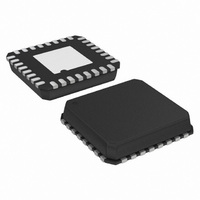AD8376ACPZ-R7 Analog Devices Inc, AD8376ACPZ-R7 Datasheet - Page 15

AD8376ACPZ-R7
Manufacturer Part Number
AD8376ACPZ-R7
Description
If Cellular Dual DGA
Manufacturer
Analog Devices Inc
Datasheet
1.AD8376ACPZ-R7.pdf
(24 pages)
Specifications of AD8376ACPZ-R7
Design Resources
Using AD8376 to Drive Wide Bandwidth ADCs for High IF AC-Coupled Appls (CN0002) High Performance, Dual Channel IF Sampling Receiver (CN0140)
Amplifier Type
Variable Gain
Number Of Circuits
2
Output Type
Differential
Slew Rate
5000 V/µs
-3db Bandwidth
700MHz
Current - Input Bias
900nA
Current - Supply
250mA
Voltage - Supply, Single/dual (±)
4.5 V ~ 5.5 V
Operating Temperature
-40°C ~ 85°C
Mounting Type
Surface Mount
Package / Case
32-LFCSP
Lead Free Status / RoHS Status
Lead free / RoHS Compliant
Current - Output / Channel
-
Gain Bandwidth Product
-
Voltage - Input Offset
-
Lead Free Status / RoHS Status
Lead free / RoHS Compliant
Other names
AD8376ACPZ-R7TR
Available stocks
Company
Part Number
Manufacturer
Quantity
Price
Company:
Part Number:
AD8376ACPZ-R7
Manufacturer:
Maxim
Quantity:
26
Part Number:
AD8376ACPZ-R7
Manufacturer:
ADI/亚德诺
Quantity:
20 000
BROADBAND OPERATION
The AD8376 uses an open-collector output structure that
requires dc bias through an external bias network. Typically,
choke inductors are used to provide bias to the open-collector
outputs. Choke inductors work well at signal frequencies where
the impedance of the choke is substantially larger than the
target ac load impedance. In broadband applications, it may not
be possible to find large enough choke inductors that offer
enough reactance at the lowest frequency of interest while
offering a high enough self resonant frequency (SRF) to support
the maximum bandwidth available from the device. The circuit
in Figure 37 can be used when frequency response below
10 MHz is desired. This circuit replaces the bias chokes with
bias resistors. The bias resistor has the disadvantage of a greater
IR drop, and requires a supply rail that is several volts above the
local 5 V supply used to power the device. Additionally, it is
necessary to account for the ac loading effect of the bias
resistors when designing the output interface. Whereas the gain
of the AD8376 is load dependent, R
should equal the optimum 150 Ω target load impedance to
provide the expected ac performance depicted in the data sheet.
Additionally, to ensure good output balance and even-order
distortion performance, it is essential that R1 = R2.
50Ω
Using the formula for R1 (Equation 1), the values of R1 = R2
that provide a total presented load impedance of 150 Ω can be
found. The required voltage applied to the bias resistors, VR,
can be found by using the VR formula (Equation 2).
and
Figure 37. Single-Ended Broadband Operation with Resistive Pull-Ups
VR
R1
=
=
ETC1-1-13
R
R1
75
L
×
−
×
150
R
40
L
×
37.5Ω
37.5Ω
50Ω
10
−
0.1µF
0.1µF
3
ETC1-1-13
5V
+
A0 TO A4
5
AD8376
5
Figure 39. Wideband ADC Interfacing Example Featuring ½ of the AD8376 and the AD9445
1/2
37.5Ω
37.5Ω
L
in parallel with R1 + R2
SET TO
5V
0.1µF
0.1µF
R1
R2
VR
VR
B0 TO B4
A0 TO A4
AD8376
5
5
1/2
0.1µF
0.1µF
5V
5V
RL
Rev. A | Page 15 of 24
(1)
(2)
1µH
1µH
0.1µF
0.1µF
82Ω
82Ω
For example, in the extreme case where the load is assumed to
be high impedance, R
75 Ω. Using the equation for VR, the applied voltage should be
VR = 8 V. The measured single-tone low frequency harmonic
distortion for a 2 V p-p output using 75 Ω resistive pull-ups is
provided in Figure 38.
ADC INTERFACING
The AD8376 is a high output linearity variable gain amplifier
that is optimized for ADC interfacing. The output IP3 and noise
floor essentially remain constant vs. the 24 dB available gain
range. This is a valuable feature in a variable gain receiver where
it is desirable to maintain a constant instantaneous dynamic
range as the receiver gain is modified. The output noise density
is typically around 20 nV/√Hz, which is comparable to 14-/16-
bit sensitivity limits. The two-tone IP3 performance of the
AD8376 is typically around 50 dBm. This results in SFDR levels
of better than 86 dB when driving the
There are several options available to the designer when using
the AD8376. The open-collector output provides the capability
of driving a variety of loads. Figure 39 shows a simplified wide-
band interface with the AD8376 driving a AD9445. The AD9445
is a 14-bit 125 MSPS analog-to-digital converter with a buffered
wideband input, which presents a 2 kΩ||3 pF differential load
impedance and requires a 2 V p-p differential input swing to
reach full scale.
Figure 38. Harmonic Distortion vs. Frequency Using Resistive Pull-Ups
(SERIES)
(SERIES)
–80
–82
–84
–86
–88
–90
–92
–94
–96
L
L
0
0.1µF
0.1µF
33Ω
33Ω
5
L
= ∞, the equation for R1 reduces to R1 =
VIN+
VIN–
14-BIT ADC
FREQUENCY (MHz)
AD9445
HD2
HD3
10
AD9445
14
15
up to 140 MHz.
AD8376
20













